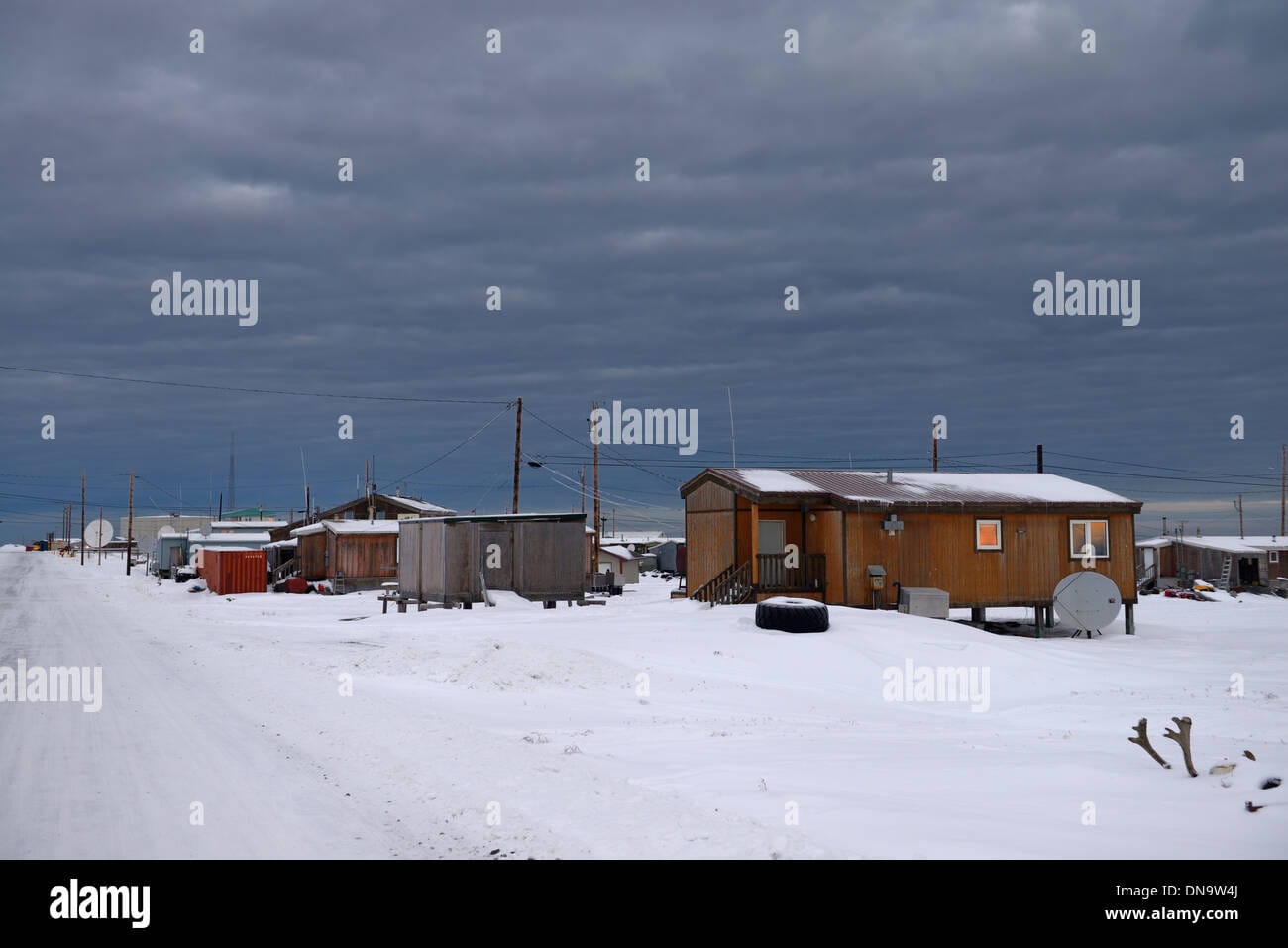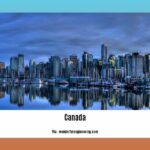Encountering Polar Bears in Their Natural Habitat
Nestled on Barter Island within Alaska’s vast Arctic National Wildlife Refuge lies the small village of Kaktovik. Here, amidst the raw beauty of the Arctic, the legendary polar bear reigns supreme. A journey to Kaktovik is a journey into the heart of nature at its wildest.
Polar Bears: The Arctic’s Majestic Visitors
Kaktovik is renowned as the “Polar Bear Capital of the World” for a reason. Every year, typically around September and October, a remarkable event unfolds. As the sea ice recedes, these magnificent creatures are drawn closer to the shores of Kaktovik. This seasonal gathering offers a once-in-a-lifetime opportunity to witness polar bears in their natural habitat.
While the prospect of observing these animals up close is exhilarating, it’s essential to remember that polar bears are wild and potentially dangerous. Joining guided tours is not merely recommended but crucial. Experienced guides prioritize visitor safety while minimizing disturbance to the bears and their environment.
Beyond Wildlife: Experiencing the Iñupiat Culture
Kaktovik is much more than just a prime wildlife viewing destination. It’s home to the Iñupiat people, who have thrived in this demanding environment for centuries. Their history, traditions, and profound connection to the land are woven into the very essence of Kaktovik.
For a truly immersive experience, delve into the world of the Iñupiat. Learn about their ancient whale hunting practices, traditions imbued with deep cultural and spiritual significance. Engage with their vibrant festivals, where ancient customs come alive through music, dance, and storytelling.
Planning Your Arctic Adventure
Reaching this isolated corner of the world is an adventure in itself. The most common route to Kaktovik is by air, a testament to the village’s remote location.
Upon arrival, cozy accommodations await at places like the Kaktovik Inn and the Waldo Arms Hotel. From there, a world of extraordinary experiences unfolds. Embark on guided polar bear viewing tours led by experts intimately familiar with the land and its wildlife. Consider a cultural tour to gain a deeper appreciation for the Iñupiat way of life. If fortunate, you might even witness the breathtaking spectacle of the Northern Lights illuminating the night sky.
A Changing Arctic: Conservation in a Warming World
Exploring the wonders of Kaktovik brings the impact of our changing climate into sharp focus. The Arctic is warming at an alarming rate, and the consequences are deeply felt in places like Kaktovik.
The shrinking sea ice, a driving force behind the polar bears’ presence near the shore, is a direct result of climate change. It serves as a stark reminder of the delicate balance within this ecosystem and underscores the critical importance of conservation efforts to protect it.
In Kaktovik, you’ll witness firsthand how these environmental shifts are impacting both the polar bear population and the traditional way of life of the Iñupiat people.
A Journey of Learning and Reflection
A visit to Kaktovik is an opportunity for personal growth and deeper understanding. Engage in meaningful conversations with locals, listen to their stories, and develop a greater awareness of the challenges they face living in a rapidly changing environment.
It’s also a chance to reflect on the concept of responsible tourism. Supporting tour operators who prioritize animal welfare and respect local culture is essential.
A trip to Kaktovik transcends simply checking a destination off a bucket list. It’s a journey into the heart of the Arctic, a chance to witness the raw power and beauty of nature, and an opportunity to connect with a culture that has thrived in this challenging yet awe-inspiring environment for generations. It’s a potent reminder of the interconnectedness of our world and the crucial importance of safeguarding its most vulnerable ecosystems.
Who Calls Kaktovik, Alaska Home?
Beyond its fame as the “Polar Bear Capital of the World,” Kaktovik, Alaska, is more than just a tourist hotspot. It’s home to the Inupiat people, who have thrived in this harsh yet stunning Arctic environment for centuries. Imagine a life dictated by the rhythms of the land, where traditions passed down through generations are not mere stories but the very essence of existence. This is the reality for the resilient Inupiat community of Kaktovik.
The 2020 census reported a population of around 283 people in Kaktovik, with the majority being Inupiat. This close-knit community has found a way to preserve their age-old customs while embracing the advancements of the modern world. They haven’t abandoned their heritage; rather, they’ve woven it together with new opportunities.
For the Inupiat people, reliance on the land and sea for sustenance remains unchanged. Hunting and fishing are not mere hobbies but a way of life, ensuring the community’s survival. Their deep understanding of sustainability is remarkable. They take only what they need, respecting the delicate balance of the Arctic ecosystem.
While maintaining their traditional practices, the Inupiat have also demonstrated remarkable adaptability. The discovery of oil and gas in the region presented new economic prospects, and many Inupiat seized these opportunities. Similarly, the rise of tourism, with travelers eager to witness majestic polar bears in their natural habitat, created jobs in the tourism sector.
The influx of polar bear enthusiasts from around the world has thrust Kaktovik into the spotlight. However, the community remains acutely aware of the need to balance economic benefits with the well-being of the very creatures that draw visitors. They are committed to responsible tourism, ensuring that the bears and their habitat are respected and protected.
Kaktovik’s story is one of resilience, adaptation, and profound respect—respect for tradition, for the land that sustains them, and for the creatures that share this remarkable corner of the world.
What is the Population of Kaktovik in 2024?
We know that Kaktovik, a small town located on Barter Island in Alaska, is inhabited by the Inupiat people. Their lives are deeply intertwined with nature, relying on hunting and fishing as a means of subsistence. According to the 2020 United States census, the population of Kaktovik was recorded as 283 people.
Unfortunately, we do not yet have precise data on the population of Kaktovik in 2024. The most recent census data available is from 2020. However, this doesn’t mean we can’t explore potential insights.
There are several ways to obtain more current information about the population of Kaktovik. You can try contacting the authorities in Kaktovik or searching for information on their official website.
While there are no definitive figures yet, we can speculate that the population of Kaktovik in 2024 will not be drastically different from 2020. Factors such as birth rates, death rates, and migration patterns will all influence population changes.
It’s important to remember that census data represents a snapshot in time. It provides a picture of the population at the time the census was conducted, which may no longer be entirely accurate at a later date.
To obtain the most current and reliable information on the population of Kaktovik in 2024, it is recommended to seek information from trustworthy sources, such as:
- The official website of the City of Kaktovik
- The website of the North Slope Borough, the region where Kaktovik is situated.
Is Kaktovik Facing Closure?
We’ve discussed the allure of Kaktovik, but rumors have circulated about the village facing closure. In reality, Kaktovik is not closed, but certain factors have raised questions about its future.
One significant concern is the potential for oil development in the vicinity of Kaktovik. Imagine: major oil companies eager to drill in this pristine environment. However, the indigenous people of Kaktovik, the Inupiat, are opposed to these endeavors. They fear that oil drilling would irreparably damage their environment and disrupt their way of life.
Another pressing issue confronting Kaktovik is climate change. Located in a region acutely vulnerable to global warming, the village is already experiencing its impacts. The sea ice, vital for hunting and sustenance, is steadily receding.
While Kaktovik is not literally closed, the challenges it faces cast a shadow of uncertainty over its future. The Inupiat people are fighting tirelessly to protect their homeland and way of life, while oil companies and the government continue to weigh their interests. Only time will tell what fate holds for Kaktovik and its resilient inhabitants.
- Unlock Water’s Symbolism: A Cross-Cultural Exploration - April 20, 2025
- Identify Black and White Snakes: Venomous or Harmless? - April 20, 2025
- Unlocking Potential: Origins High School’s NYC Story - April 20, 2025















